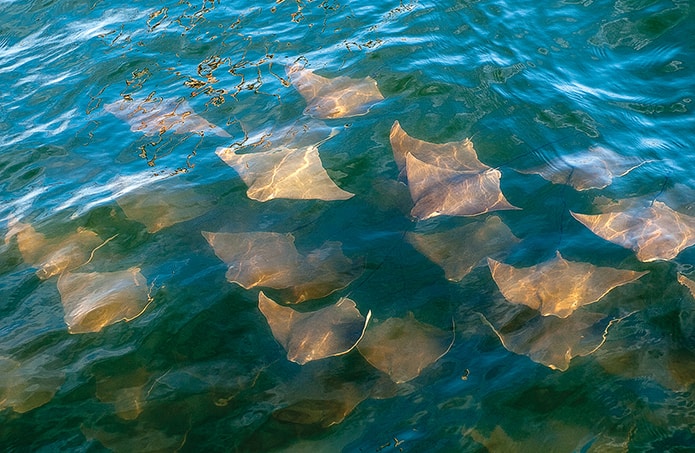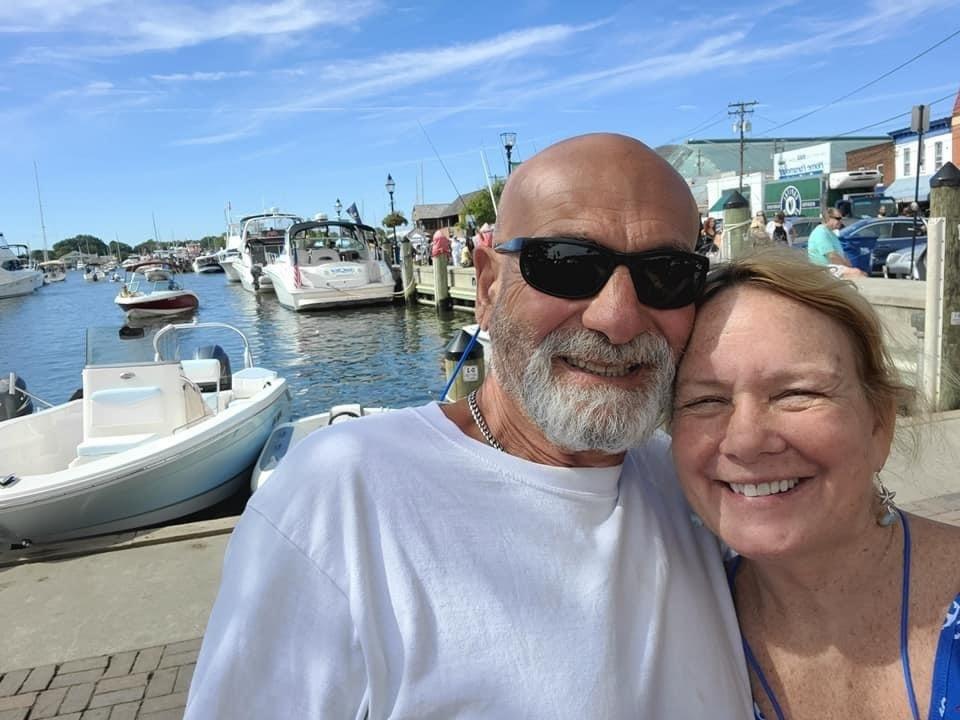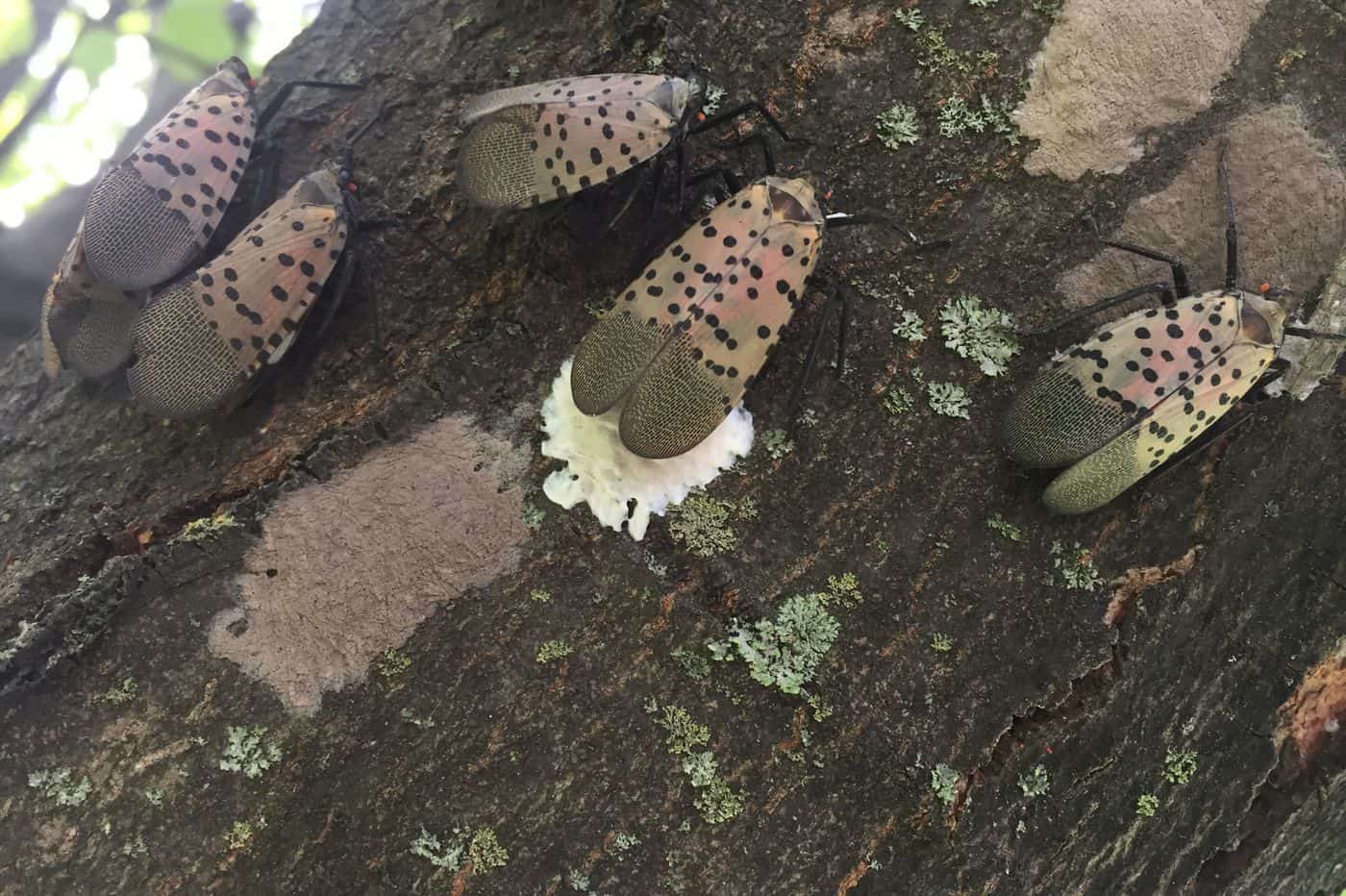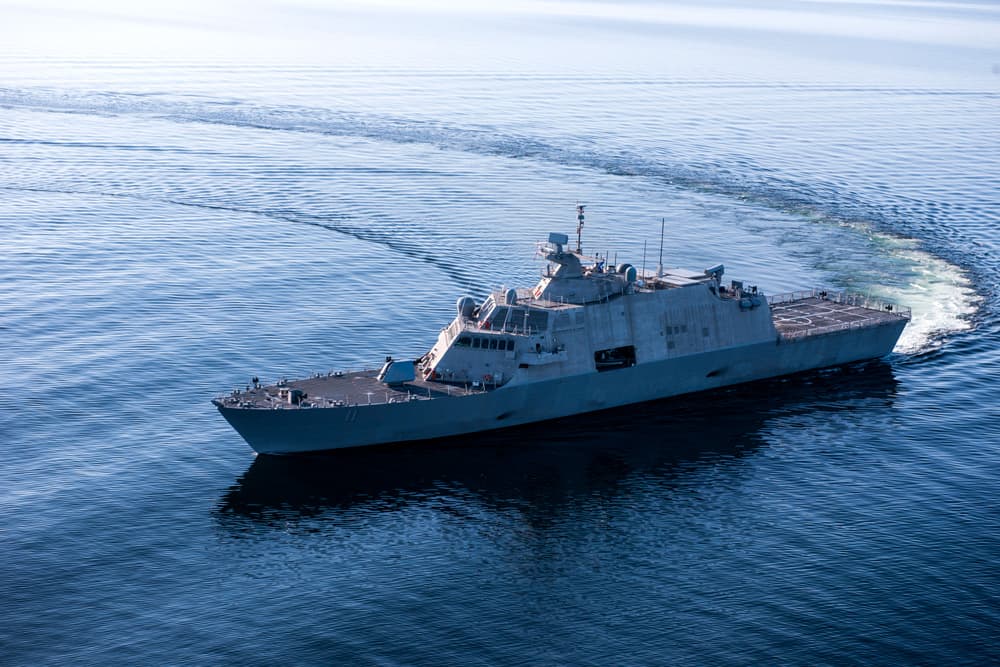By Timothy B. Wheeler, Bay Journal News Service
Photo: Dave Harp/ Bay Journal News ServiceHuman snowbirds aren’t the only ones to flock to Florida’s sunny shores when the weather chills. New research shows that the Chesapeake Bay’s cownose rays spend their winters off Cape Canaveral with other East Coast rays before returning to the Bay each spring to bear their young and mate.
The research, published August 23 in the Marine Ecology Progress Series, sheds fresh light on the migration patterns of the kite-shaped creatures, which are beloved by nature lovers but reviled by oyster farmers and many watermen because they feed on shellfish.
The study’s authors say their findings suggest that cownose rays, so named because of their cowlike snouts, could be depleted in a given area by fishing or other human activity if not careful. Maryland is currently the only East Coast state that has any limits on either the recreational or commercial harvest of cownose rays, with a temporary moratorium imposed last year on bowfishing tournaments that kill hundreds at a time.
“What we know about the migration behavior from this study suggests we do need to be cautious in the management approach,” said Matthew Ogburn, an ecologist with the Smithsonian Environmental Research Center in Edgewater, MD, and the lead author of the paper. “It’s a species that, if overfished, would potentially take a generation to recover.’’
From 2014 through 2016, scientists from the Smithsonian lab in Maryland, the Virginia Institute of Marine Sciences and Savannah State University tagged 42 rays that had been caught by commercial fishermen. Most came from Virginia, with five in Maryland and two in Georgia.
Researchers implanted tiny acoustic transmitters in the rays before releasing them. They tracked the tagged rays’ movements via a network of hydrophones, or underwater microphones, that have been deployed in the Bay and along the East Coast. Those devices picked up the unique “ping” each ray’s transmitter emitted. Of the total tagged, 28 rays were picked up by the telemetry network for more than 90 days, which was long enough to learn about their migratory behavior.
Another study published last year by VIMS researchers, which used a different tagging technology, identified the near-shore Atlantic waters of central Florida as a winter gathering place for rays. But the newly published research is the first to track their full annual migration cycle. It suggests that most if not all return to the same estuary — and even tributary — where they had been captured.
Though native to the Chesapeake, cownose rays’ life history has been little understood until recently. Brown to olive-green in appearance on top with whitish bellies and long, whiplike tails, they are found along the East Coast and in the Gulf of Mexico, though those populations appear to be separate. They come into the Bay in May, and the females give birth in June or July to one or occasionally two pups. They then mate with male rays, which leave the Bay in July. The females stay through summer, departing by October.
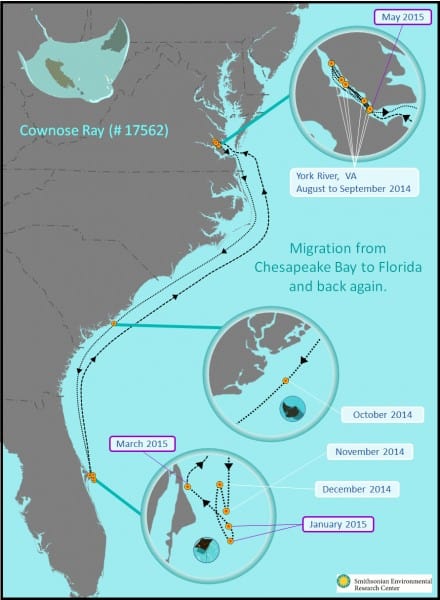
All of the rays tagged for this study in Maryland, Virginia and Georgia spent the winter along Florida’s Atlantic coast between Cape Canaveral and the St. Lucie Inlet. Ogburn said it’s not clear why rays from all along the East Coast congregate there, but researchers did note that some Atlantic shark species also overwinter there.
Tagged males spent the late summer foraging along the East Coast as far north as Long Island Sound, researchers say. Most stayed in relatively shallow coastal waters, but some did venture farther offshore. All joined the females on the fall migration to Florida.
Researchers have yet to pin down whether rays return to the same waters where they were born, as the studies so far have only tagged adults and followed them for just a couple of years at most.
The data so far are very limited but suggestive. Only five tagged rays yielded location data for two summers in a row; of those, three from Virginia and one from Georgia returned to where they’d been tagged. The fifth spent both summers in the Chesapeake, but in different states.
Scientists are now turning their attention to studying immature rays, which remain mostly a mystery. Last summer, they tagged 20 in the Potomac River that had been born earlier that year.
“We’re waiting now to see where they go,” Ogburn said. The hydrophones that pick up their tag signals only get checked two to four times a year, but the initial data retrieved so far indicate they headed south last fall.
Cownose rays tend to travel in schools and can grow large, reaching a wingspan of 3 feet and weighing up to 50 pounds. They feed mostly on soft-shelled clams, but also go after hard clams and oysters when available.
Watermen contend there has been an explosion of rays in the Chesapeake, but Ogburn said that the population, if it increased, has done so gradually. Female rays take seven to eight years to reach maturity and generally have only one pup a year.
Oyster farmers, though, say they have suffered significant losses to foraging schools of rays. Rays have also been blamed for tearing up underwater grass beds and depleting wild oyster populations, a claim rebutted two years ago by another study linking those declines to oyster diseases and overfishing. Even so, Virginia has tried — without much success — to promote the development of a commercial fishery for rays as a way of curbing their population.
Recreational bowfishing tournaments in Maryland and Virginia have targeted rays for several years, with as many as an estimated 600 killed in a single contest, including female rays still carrying their young. The tournaments have stirred a public outcry, fueled by graphic videos showing rays being killed. In response, Maryland lawmakers in 2017 passed a two-year moratorium on such contests, ordering the Department of Natural Resources to develop a management plan for the species.
The DNR convened a workgroup in February to discuss management options for cownose rays. It hasn’t met since, but the DNR staff laid out plans then to develop a management plan by the fall and finalize it by December to meet the requirements of the law. It isn’t clear what limits the DNR would impose. Animal rights activists and others have called for a permanent ban on ray bowfishing tournaments, but organizers and participants in such events defend them and insist the state shouldn’t give in to “emotionalism.”
Ogburn and the researchers say fishery managers should be cautious about allowing fishing for rays. If research bears out that rays form distinctive localized populations, he said, then there is a risk that intense harvesting or other human activity could deplete that group and whatever makes It different from the other rays. And if that happens, it may take a long time, if ever, for their numbers to rebound.
While cownose rays can impact commercial fisheries and aquaculture operations by consuming shellfish and can uproot some Bay grass beds, Ogburn suggested they may also play a constructive ecological role that’s not clearly understood yet. Their disturbance of bottom sediments, for instance, he said, may help increase the diversity of bottom-dwelling organisms.
“They’re big enough and active enough. They must be important in what’s going on down there,” Ogburn said.

